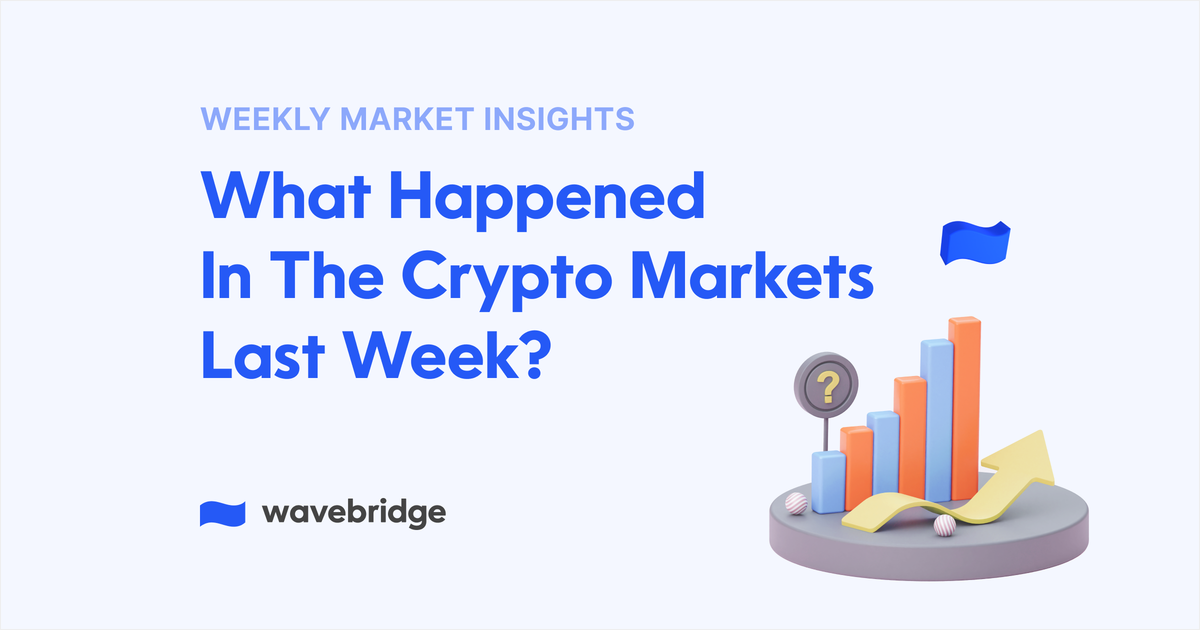Market Insights: Jun 2025 | Week1

Wavebridge Research/
Strategic Bitcoin Reserves and Institutional Accumulation Accelerate
Trump Media & Technology Group, in which former President Donald Trump is a major shareholder, has formalized its Bitcoin reserve strategy by raising $2.32 billion through a private placement with 50 institutional investors. This move aligns with the administration’s broader push to establish a national strategic Bitcoin reserve, underscoring a growing consensus across both public and private sectors to position Bitcoin as a core treasury asset. Bitcoin’s protocol enforces a fixed supply of 21 million coins, making it inherently resistant to inflation; as of May 2025, approximately 19.6 million coins—over 93% of the total—have already been mined, with the remainder to be released at an ever-slowing pace due to scheduled halving events. The current block reward stands at 6.25 BTC, set to decrease to 3.125 BTC after the 2025 halving, and eventually to 0.78125 BTC by 2028, further reinforcing Bitcoin’s scarcity. This unique supply dynamic has driven a wave of institutional adoption, with global corporations accelerating their Bitcoin purchases. MicroStrategy, for example, recently added 4,020 BTC to its holdings, bringing its total to over 580,000 BTC, while 116 publicly listed companies worldwide now collectively hold more than 808,000 BTC. BlackRock’s spot Bitcoin ETF has amassed 636,100 BTC, and total Bitcoin ETF assets have soared to $125 billion in just twelve months—a growth rate twenty times faster than that of gold ETFs. Meanwhile, New York City has announced plans to issue 10-year municipal bonds tied to Bitcoin, offering a 1% annual yield and sharing Bitcoin gains with bondholders—an innovative experiment in public finance, though not without controversy and regulatory scrutiny. On the infrastructure front, Marathon Digital Holdings’ CEO has proposed that the U.S. government directly mine Bitcoin as a strategic reserve, and new mining ventures like Bitlayer are securing significant hashrate to bolster the network. In the real economy, Jack Dorsey’s Block is integrating Lightning Network-powered Bitcoin payments into Square’s point-of-sale ecosystem, enabling merchants to accept Bitcoin seamlessly and further embedding the cryptocurrency into daily commerce. Together, these developments illustrate how Bitcoin’s engineered scarcity, institutional embrace, and expanding utility are reshaping the global financial landscape at an unprecedented pace.
Stablecoin and Altcoin Ecosystems See Explosive Growth
Between 2023 and February 2025, the volume of stablecoin payments soared to $94.2 billion, underscoring the unprecedented growth of the digital asset market. According to Sentora, DeFi lending has rebounded to $30 billion, while the stablecoin market capitalization surged by 56% in just one year, pushing the total global digital asset market value past $3.5 trillion. At the heart of this expansion is the rise of “bank-grade” stablecoins, spearheaded by established financial institutions such as Société Générale, PayPal, JPM Coin, and Bank of America, alongside global payment giants like Stripe integrating stablecoin solutions into their infrastructure. Stripe, in particular, views stablecoin payments as the backbone of future financial systems and is actively collaborating with major banks to drive adoption. Meanwhile, regulatory momentum continues: Hong Kong’s SFC has authorized HashKey Exchange to officially list XRP, further cementing the token’s institutional legitimacy. Nasdaq-listed VivoPower raised $121 million to launch an XRP-centric digital asset custody strategy, while Ripple’s acquisition of Hidden Road has enabled the rollout of OTC swap services for U.S. institutional investors—signaling rapid evolution in the altcoin space. Stablecoin protocol Ethena, through partnerships with Pendle and Aave, has expanded its collateralized derivative assets to $700 million, with total collateralized supply surpassing $1 billion. Most recently, FTX began distributing approximately $5 billion in stablecoins to creditors, injecting fresh liquidity into the market and highlighting the sector’s ongoing transformation.
U.S. Crypto Regulation Remains Fragmented and Uncertain
The U.S. Securities and Exchange Commission (SEC) has postponed its decision on approving staking ETFs for Solana and Ethereum, while officially declaring that digital asset staking services do not constitute securities. However, regulatory uncertainty persists as five state governments, including California, continue legal actions against Coinbase, fueling ongoing turmoil within the cryptocurrency industry. Concurrently, Binance.US swiftly announced its business resumption following the SEC's withdrawal of its lawsuit, asserting its legitimacy amid the uncertain regulatory landscape for crypto trading in the United States. Despite the SEC's stance that staking services are not securities, the continuation of lawsuits by certain states underscores the fragmented and unsettled regulatory environment. Furthermore, the SEC has once again delayed its decision on Bitwise's request to convert its cryptocurrency index fund into an ETF, leaving investors in major altcoins such as XRP, Solana, and Cardano shrouded in uncertainty.
Global Divergence in Crypto Policy and Adoption
Hong Kong’s Securities and Futures Commission (SFC) has accelerated the mainstream integration of digital assets by greenlighting XRP’s listing on HashKey Exchange, while Pakistan defied IMF concerns over legal frameworks to announce a national Bitcoin reserve and a 2,000 MW mining infrastructure push—bold steps to position itself as a digital economy leader. Thailand, in contrast, tightened oversight by banning five unlicensed exchanges, including Bybit and OKX, signaling a regulatory crackdown. Meanwhile, Kazakhstan is expanding its “Crypto City” experiment to enable real-world crypto payments, and Germany’s Midas launched tokenized U.S. Treasuries on the Algorand blockchain, pioneering the digitization of traditional assets. Corporate adoption is surging: Paris Saint-Germain (PSG) became the first major sports club to allocate Bitcoin to its treasury, while Nasdaq-listed MegaMatrix, Blockchain Group, and Sweden’s H100 Group raised millions via bond issuances to aggressively expand their Bitcoin holdings. China’s state-affiliated think tank endorsed Bitcoin as a strategic hedge against dollar dominance, and Panama is considering priority canal passage for vessels paying fees in BTC—a testament to the tripartite alignment of nations, corporations, and tech in reshaping finance. Yet Meta’s rejection of shareholder proposals to add Bitcoin to its balance sheet and South Korea’s final delisting of Wemix underscore lingering regulatory friction. These contrasts highlight a critical truth: For digital assets to achieve stable growth, policymakers must prioritize clarity, and global coordination remains non-negotiable.
